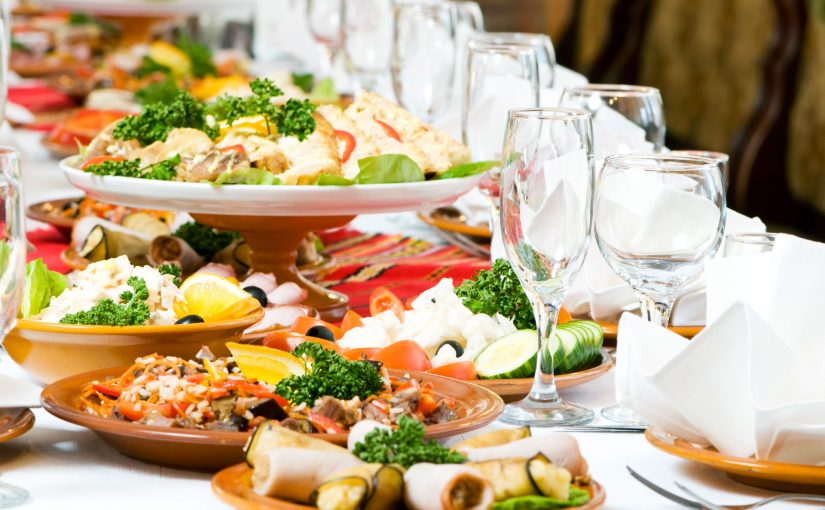Commercial catering. Speaking of restaurants means describing something very broad and generic and that requires important distinctions because it encompasses many aspects.
It is part of that sector in the trade that concerns those activities that deal with the production and distribution of meals for customers.
A sector that, with the increase in consumption of meals away from home, for work reasons, has found a remarkable growth and diversification, compared to the more traditional forms.
Each environment or sector of work is based on certain bases and in this case it is appropriate to identify the rules for commercial restaurants.
Commercial catering
In fact it is defined in this way, as it includes both the hotel branch, the typical restaurant, the fast one and the traveling one.
A feature that distinguishes commercial catering from other forms is that the companies that deal with the production and distribution of meals, refer to the individual customer, who has the right to choose the type of service, then the dishes to eat, choosing from a menu and therefore know what kind of price goes to meet.
DIFFERENCES IN COMMERCIAL RESTAURANT
Commercial catering
Going deeper than the explanation, in the commercial catering are part of those activities that deal with typical restaurants, so a traditional cuisine that offers typical dishes have a link with the territory.
We also talk about activities that are based on a high quality concept, therefore those defined local gourmets whose environments are looked after in appearance, in the smallest details and with taste; moreover, we talk about refined and expensive food accompanied by important wine selections, a wider selection of cheeses and desserts.

The theme restaurants, which are the ethnic ones that offer a type of cuisine typical of a particular country, are also included in the commercial restaurants category, as in the case of Chinese, Indian, Mexican restaurants etc., or that base their cuisine on specific foods as in the case of vegetarian restaurants.
Commercial catering
Then there are the restaurants of entertainment that in addition to the restaurant offer live music performances, cabaret, dance and anything else can involve their guests.
They are simpler, in the furnishing and in the culinary proposal, but always pleasant, that is the trattorie: here prevails a kitchen of traditional type and casareccia and portions also abundant.
To end it is also called neoristorazione, which includes those commercial activities that are developing in recent years, such as self-service, fast food, pizzerias, spaghetti restaurants, fry or take away.
Commercial catering
They are characterized by speed of service and as in the cases of self-service there is also the participation of the customer who serves alone and once finished eating, free the table by placing the tray emptied into special bins.
Also consider the traveling restaurant category which includes the railway, air and naval categories and which, unlike the others we have mentioned, has particular needs. In fact it requires a good organization, human resources and at the same time also guarantee a medium-high quality of food and service.
It also needs equipment and forms of food preparation to store it, transport it and also considering small spaces to store it.
CUSTOMER CARE
Commercial catering
Among the rules for commercial restaurants, in addition to everything related to the organization of activities, services and the type of cuisine to be proposed, since there is a direct relationship with the individual customer, we need to broaden the marketing discourse on those which are the targets to which the various forms of commercial catering refer.

In fact, what counts is the concept of loyalty, which is expressed in the choice of the customer to use the services and consume meals of a specific restaurant, as well as in the preference of prices that the local offers for the consumption of its food.
This means that commercial catering, takes into account the trends and preferences that express its customers, thus going to propose their offer trying to capture the tastes and the resulting satisfaction of those who use it.
This is a very important branch of catering, also because it embraces most of the activities that are developed in this sector and is also very open to innovation, as in recent years, for example, the service of home food through the use of smartphone applications.
Very important is also the market of software for restaurants, which are now becoming of fundamental importance from the point of view of the optimization of work processes, as they allow to speed up those daily operations, which usually take place manually, and consequently reduce noticeably the margin of error.
From this point of view Ristomanager represents an instrument of remarkable quality and great effectiveness, by virtue of its many services and above all for its simplicity of use, which makes it affordable for everyone and therefore also for those who are not very practical with the technology.
Read also: The best app for catering: features and how to choose them


